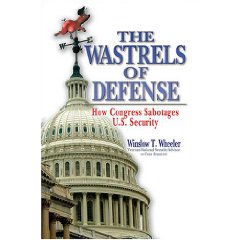This book should be read simultaneously with two others books: David Callahan's The Cheating Culture: Why More Americans Are Doing Wrong to Get Ahead and also William Greider's, The Soul of Capitalism: Opening Paths to a Moral Economy.
The alter ego of this book, in this case from Latin America, is Alvaro Vargas Llosa's “Liberty for Latin America: How to Undo Five Hundred Years of State Oppression (Independent Studies in Political Economy) As populism sweeps across Latin America, and Western corporations are expelled, as Hugo Chavez in Venezuela works to extend European concepts of Social Democracy and egalitarian distribution of wealth, this book (“Confessions”) can be said to be the equivalent of Martin Luther's posting to the cathedral door–it outlines all the reasons why Americans–US citizens–must heal themselves and retake control over their own economy, ceasing the transfer of its plagues to others.
At root, this book is about what we teach in our schools and practice in our daily lives: values, or a lack there-of. Together with other related books, such as Clyde Prestowitz' Rogue Nation: American Unilateralism and the Failure of Good Intentions this book makes crystal clear the fact that we have abandoned our original morality and focus on a Republic offering hope to all mankind, and instead created an Empire, by, of, and for the 1% of the American population that is now in super-sized wealthy elite status.
Most upper middle class and wealthy elite Americans will be made uncomfortable by this book. Having been educated by largely marginal educational systems where cheating is tolerated and rote learning pays lip service to the concept of developing independent intellects, most will find this book shocking to the point of wondering if it is false. Instead, I would join the author in suggesting that it is we who are living the lie, we who have lost faith with our Founding Fathers.
According to the author, there is a clear and present danger to all Americans, and to the rest of the world, of continuing a system of “off the books” national security practices which revolve around “independent” corporate activities that seek to subvert and impoverish Third World nations for the enrichment of a narrow elite in America, and a narrower elite within each of the countries being targeted.
One cannot help but be impressed by the commonality of themes between this author, and the fatwa's of Bin Laden and the charismatic populism of Hugo Chavez. Indeed, the author goes so far as to suggest, obliquely but clearly, that Bin Laden and others who oppose US multinational imperialism are closer to the spirit of Tom Paine than those who claim to represent America. Reading Vice: Dick Cheney and the Hijacking of the American Presidency and Running on Empty: How the Democratic and Republican Parties Are Bankrupting Our Future and What Americans Can Do About It I must agree.
What I see, having specialized in predicting revolutions many years ago, is that we have reached a tipping point. The author treats 9-11 as his own tipping point, an event that caused him to overcome a vow of silence and bring forth his story for public consumption. On a larger scale, what I see, both at home, where cheating is epidemic across all the professions and in all walks of life, and abroad, where legalized looting of countries takes place in the guide of “free trade” rather than “fair trade,” is an impending spontaneous combustion of populations and economies.
Three side notes:
First, the author highlights the role of the Department of Treasury as a national security and foreign affairs actor. Those who have read Sterling and Peggy Seagrave's Gold Warriors: America's Secret Recovery of Yamashita's Gold will have an easier time understanding how Treasury might maintain “off the books” national security funds that can be used to corrupt foreigners and fund covert action campaigns so secret even the CIA is not privy to them-truly a form of White House influence that needs to be better understood.
Second, the author underscores how little Americans actually know about what is going on overseas, in part because the capital city newspapers overseas, the mainstay of what the US government and US media read, ignore the provincial papers, and in part because we have no truly independent objective Open Source (Information Agency that can collect and integrate “ground truth” on behalf of the public. His depiction of the differing perspectives in Latin America-those we call terrorists consider themselves patriots fighting immoral actions to dam rivers and destroy forests as well as entire tribes-is provocative.
Third and finally, the author illuminates the unholy alliance between corporations intend on taking over foreign territory with unexploited gold, oil, or other riches, and certain religious organizations, chief among them the mis-named Summer Institute of Linguistics (SIL), that use a variety of dirty tricks, including laxative-laden food gifts and duplicitous “land grabbing” techniques, to move tribes away from the riches and to obtain land grants under false pretenses.
As China and India woo Latin America, along with Iran, Pakistan, and Russia, I anticipate a clear and present danger to America: our immoral carpet-bagging is setting the stage for us to be thrown out of the region, with consequences for our economy that are staggering. Morality does matter. This book drives a stake into the heart of the devil we have allowed to dominate our global relations, to pillage and loot “in our name.”
Published since this was reviewed:
The Battle for the Soul of Capitalism: How the Financial System Underminded Social Ideals, Damaged Trust in the Markets, Robbed Investors of Trillions – and What to Do About It
The Soul of Capitalism: Opening Paths to a Moral Economy









